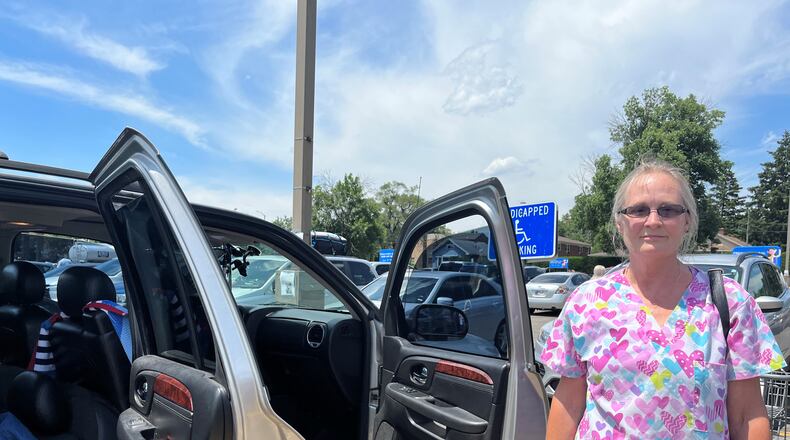Older automobiles can be expensive to maintain, typically get worse gas mileage than newer vehicles and they lack some of the technology that makes new cars safer than ever, some industry observers and safety groups say.
But sometimes it makes more financial sense for Ohioans to hang onto their aging rides than to shell out significant sums for something new.
“Owning and maintaining older cars could be more difficult because as technology advances, old car parts become obsolete and hard to find,” said Kara Hitchens, manager of public and government affairs for AAA Miami Valley. But “new technology comes with a price. So if it seems like new cars are more expensive, they are.”
More than one in four passenger vehicles registered in the Miami Valley region and Ohio are at least 15 years old, according to vehicle registration data obtained by this newspaper from the Ohio Bureau of Motor Vehicles.
In Clark County, nearly 35% of passenger cars are 15 and older, and one-third of vehicles in Champaign County fall into this age group.
About 21.4% of registered passenger vehicles in Warren County, 27.4% of vehicles in Greene and Butler counties and 30.5% of cars in Montgomery and Miami counties were made before 2008, state data show.
Aging vehicles
The average age of light U.S. vehicles has increased for five straight years, and this year it reached at an all-time high of 12.2 years, according to research from S&P Global Mobility.
The median age of passenger cars in Montgomery, Miami and Champaign counties is 10 years old, according to the Bureau of Motor Vehicles. It’s 11 in Clark County, 9 in Greene and Butler counties and 8 in Warren County.
Many people have held onto their vehicles longer than normal, and new car sales fell in the first year of the pandemic and remained well below pre-COVID sales in 2021.
Sales declines have been partly related to limited inventory, because carmakers cut production due to supply chain and inventory challenges, like a shortage of microchips, S&P Global Mobility said.
Also, traffic levels fell during the pandemic, and many people who typically commuted to their jobs worked from home and put fewer miles on their vehicles.
Long lives
Also, even some older cars were built much better and last much longer than their predecessors, said Zach Doran, president of the Dayton Area Automobile Dealers Association and the Ohio Automobile Dealers Association.
Tight inventory certainly is a concern, Doran said, noting, “If we had more vehicles to sell, we’d probably sell more.”
But right now is a good time to shop for a new car because the value of used trade-ins has gone up more than the price of new vehicles, Doran said.
“I think a lot of consumers have been pleasantly surprised by what their trade-ins have been worth,” he said.
Used car prices in Ohio increased nearly 17% between May 2021 and May 2022, which on average added thousands of dollars to their price tags, according to iSeeCars.com.
Most newer cars get better gas mileage, which is very appealing at a time of high gas prices, Doran said, and older cars can have serious repair needs that can end up costing nearly as much as new car payments.
Christine Bledsoe, 60, of Dayton, bought a 2006 GMC Denali about a week and a half ago.
She said the SUV is a gas guzzler, but it’s in good shape and she got a good deal in a market where “prices are absolutely insane.”
“My daughter recently got a work vehicle, for a job, that was new, and they paid through the nose for that,” she said. “Everything is ridiculous, if you can even find what you want.”
The SUV has decent safety features, Bledsoe said, adding that good driving skills and safe driving behaviors are just as important as any safety feature.
But she said she would have liked to buy a newer car if prices weren’t so high.
Safety improvements
Cars today are much safer than they were even 15 years ago because they typically have crash-avoidance systems, hands-free Bluetooth technology and parking sensors, Doran said.
Other recent advancements include driver assistance and blind-spot detection systems that use sensors or video cameras, says the National Highway Traffic Safety Administration.
Since September 2011, all new cars are required to have electronic stability control systems to help drivers avoid spinning out and losing control of their vehicles, the administration said.
All new cars since mid-2018 have been required to have rearview video systems, which can help prevent back-up crashes, the organization said.
Newer vehicles’ chips, sensors and brake and lane-keeping assistance technology come with a price, such as when the vehicles need to be serviced, said Hitchens, with AAA.
“If you have a repair, it is expensive because the repair isn’t just a simple replacement anymore,” she said.
Paul Ratliff, 65, of Riverside, acquired a 1999 Ford Contour about five or six years ago.
He said the sedan needs regular maintenance, but it is fairly reliable and runs perfectly well.
Ratliff said it is “hit or miss” trying to find parts of older vehicles, and every model and make has some kind of issue.
But, he said, preventative maintenance goes a long way.
“This will last indefinitely — as long as you take care of it,” he said. “A car can last forever, as long as you take care of it.”
About the Author

